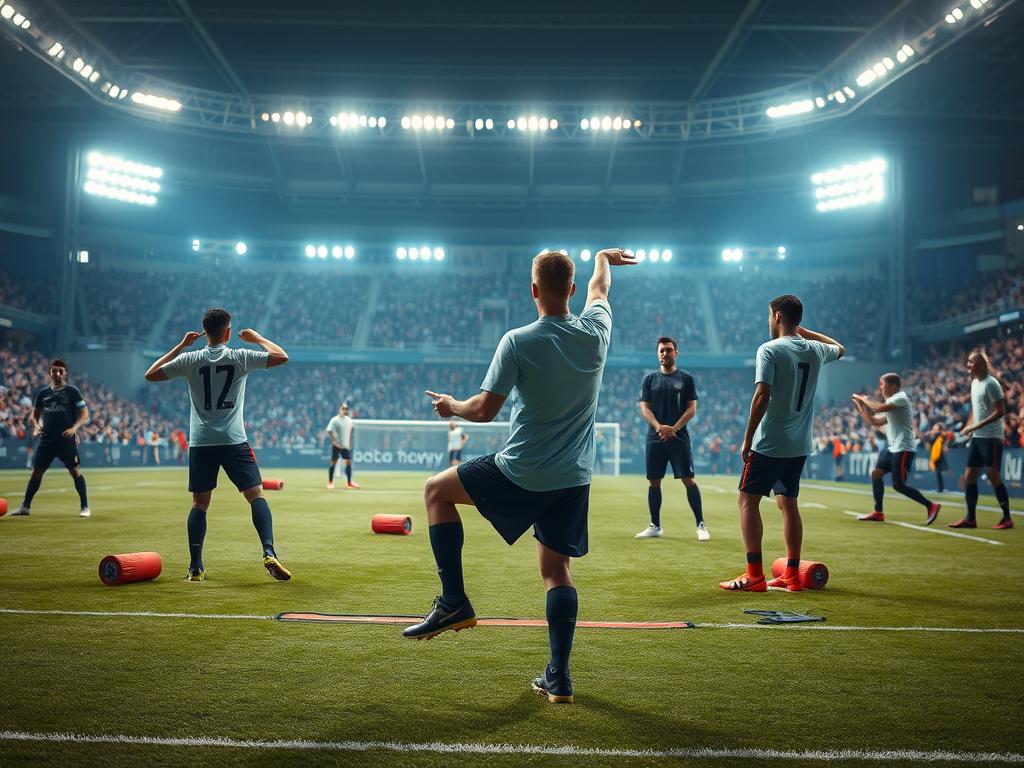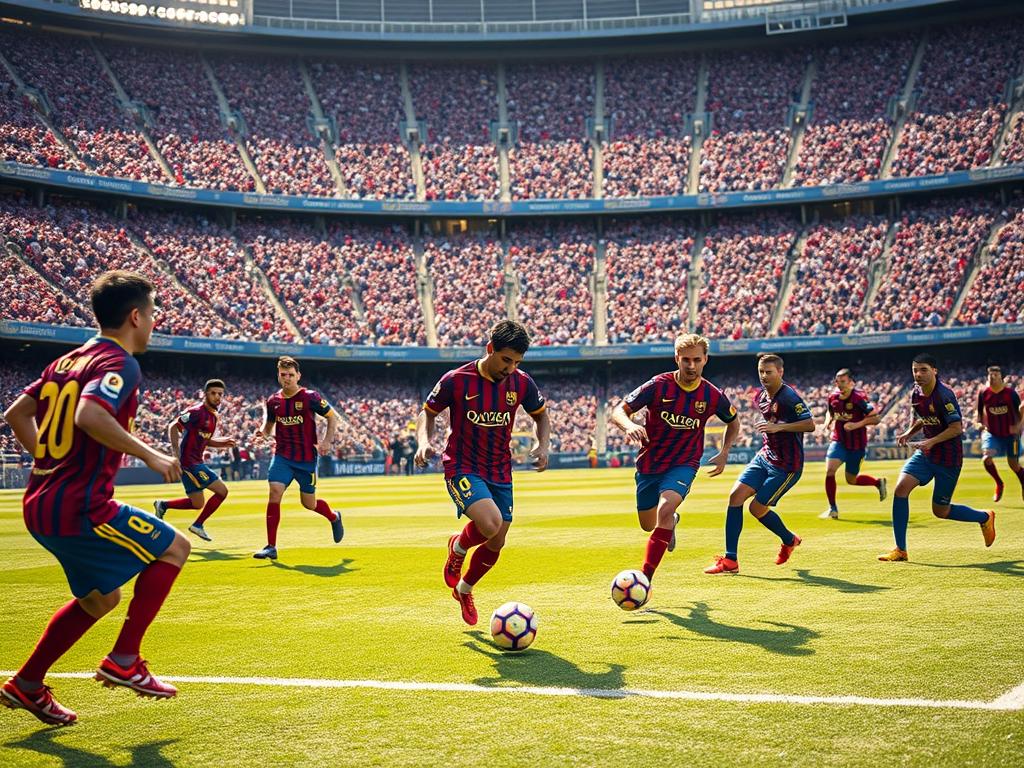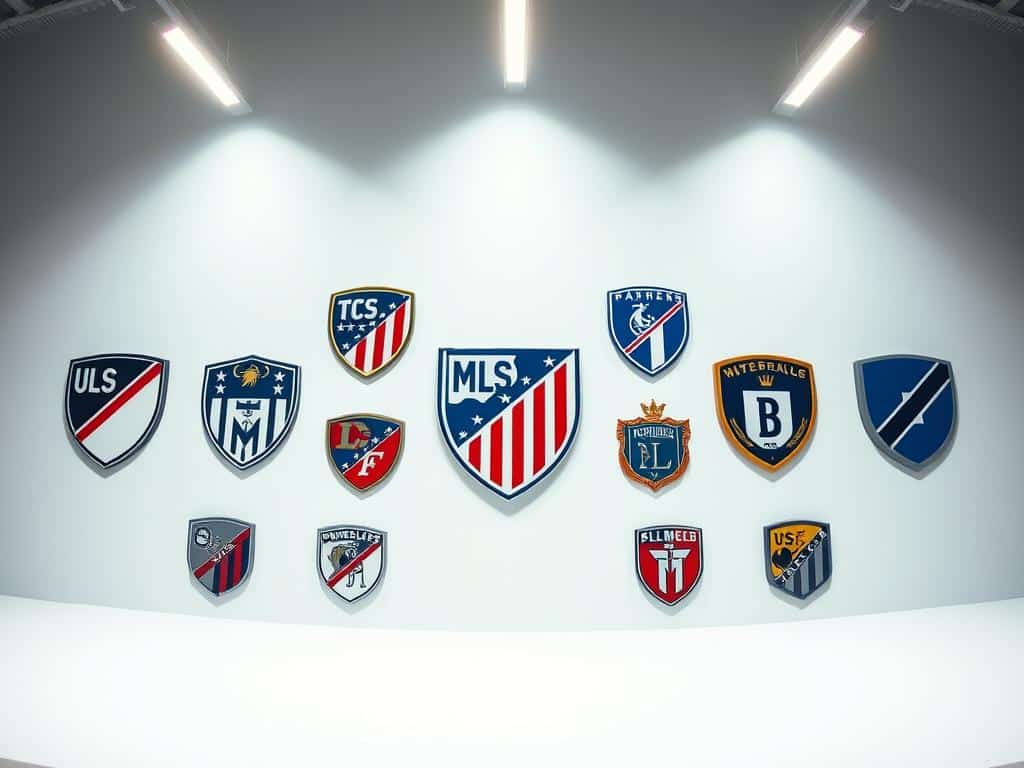Ever wondered why a goal gets disallowed even when it looks perfectly fine? The answer often lies in one of the most debated aspects of the game: the offside rule. Whether you’re a new fan or a seasoned player, understanding this rule can transform how you watch and enjoy soccer.
At its core, the rule ensures fair play by preventing attacking players from gaining an unfair advantage. A player is considered offside if they are nearer to the opponent’s goal line than both the ball and the second-last opponent when the ball is played to them.
This article breaks down the rule in simple terms, explores its history, and explains how modern technology like VAR is changing the game. By the end, you’ll have a clear understanding of what makes this rule so crucial—and how to spot it in action.
Overview of Offside in Soccer
Have you ever questioned why a perfectly good goal gets called back? The answer often lies in the offside rule, a fundamental part of the game. This rule ensures fairness by preventing attacking players from gaining an unfair advantage. Understanding its history and tactical importance can deepen your appreciation for the sport.
History and Evolution of the Rule
The offside rule dates back to 1863 when the Football Association (FA) formalized it. Initially, a player was offside if they were ahead of the ball and all but one opponent. Over time, the rule evolved to keep the game balanced and exciting.
In 1990, a major change allowed players to be onside if they were level with the second-last opponent. This adjustment made the rule more player-friendly and reduced controversial calls. Historical debates, like Arsene Wenger’s proposals, continue to shape its future.
The Tactical Importance of Maintaining Balance
The offside rule isn’t just about fairness—it’s a tactical tool. Teams use strategies like the offside trap to catch attacking players out of position. This requires precise timing and coordination among defenders.
By preventing goal-hanging, the rule encourages dynamic play and keeps the game engaging. It’s a testament to how a simple law can shape the flow and strategy of soccer.
soccer offside rule explained
Why do some plays get flagged even when they seem perfectly legal? The answer often lies in the offside rule, a key part of the game that ensures fairness. Let’s break it down so you can spot it in action.

Definition and Key Criteria
A player is in an offside position if they are in the opponent’s half and closer to the goal line than both the ball and the second-last opponent when the ball is played. Timing is critical—the decision is made the moment the ball is passed.
Body parts like the head, body, or feet determine the position, but arms are excluded. Being in an offside position isn’t always an offense. It only becomes one if the player interferes with play or gains an advantage.
Exceptions: Goal Kicks, Throw-Ins, and Corner Kicks
There are moments when the offside rule doesn’t apply. For example, during a goal kick, throw-in, or corner kick, a player can’t be offside. These exceptions keep the game flowing and reduce unnecessary stoppages.
Here’s a quick breakdown of when the rule is waived:
- Goal kicks: The ball is back in play from the goal area.
- Throw-ins: The ball is returned to the field from the sideline.
- Corner kicks: The ball is played from the corner arc.
Understanding these nuances can help you appreciate the game even more. By knowing the rule and its exceptions, you’ll see why certain plays are allowed or disallowed.
How Technology is Revolutionizing Offside Decisions
Have you noticed how technology is changing the way referees make calls on the field? From VAR to semi-automated systems, advancements are reshaping how offside decisions are made. These tools aim to reduce errors and ensure fairness, making the game more exciting for fans and players alike.
VAR and Its Impact on Officiating
VAR, or Video Assistant Referee, has become a game-changer in modern soccer. It helps referees review critical moments, including offside calls, with precision. During the 2022 World Cup, VAR played a key role in ensuring accurate decisions, even in high-pressure situations.
Here’s how it works: VAR officials review footage from multiple angles and communicate with the on-field referee. This process ensures that every decision is backed by clear evidence. While it can take a few minutes, the accuracy it provides is worth the wait.
Semi-Automated Offside Technology in Action
Semi-automated offside technology (SAOT) takes things a step further. Introduced in the UEFA Champions League and tested in Serie A, this system uses tracking cameras and sensors on the ball and players. It creates 3D animations to determine offside positions in real-time.
For example, during the 2022 World Cup, SAOT reduced decision-making time by 30 seconds on average. It also minimized human error, ensuring that every call was fair and accurate. This technology is set to debut in the Premier League by the 2024/25 season, promising even faster and more reliable decisions.
While technology has its benefits, it’s not without limitations. Some argue that it takes away from the spontaneity of the game. However, the overall impact has been positive, making soccer more transparent and fair for everyone involved.
Practical Tips for Players and Coaches
Mastering the offside trap can turn your team’s defense into a fortress. Whether you’re a player looking to stay onside or a coach teaching positioning, these tips will help you refine your strategy and avoid costly mistakes.

Implementing Offside Traps Strategically
An offside trap is a defensive tactic where defenders move upfield to catch attacking players in an offside position. Timing and communication are key. Here’s how to execute it effectively:
- Coordinate with your team: Defenders and the goalkeeper must work together to move in sync.
- Watch the line: Stay aligned with the last opponent to avoid leaving gaps.
- Time your move: Step forward just as the ball is played to catch attackers off guard.
Teams like AC Milan and Arsenal have used this strategy to great effect in high-pressure matches. Practice makes perfect, so incorporate drills that simulate real-game scenarios.
Staying Onside: Tips for Players
For players, staying onside requires awareness and discipline. Here’s how to avoid being caught out:
- Watch the line: Keep an eye on the second-last opponent and the ball.
- Time your runs: Wait for the right moment to make your move.
- Communicate with teammates: Let others know when you’re making a run.
Drills focusing on timing and positioning can help players internalize these skills. For example, practice matches with an emphasis on offside awareness can make a big difference.
Common Pitfalls and How to Avoid Them
Even experienced teams can fall into traps. Here are some common mistakes and how to avoid them:
- Miscommunication: Ensure everyone knows their role in the offside trap.
- Poor timing: Moving too early or late can leave your team vulnerable.
- Lack of practice: Regular drills are essential to perfecting the strategy.
By understanding both the law and practical tactics, you can turn the offside trap into a powerful tool for your team. Adapt your approach based on your opponent’s style, and you’ll see the results on the field.
Real-World Examples and On-Field Scenarios
Ever wondered how a single call can change the outcome of a match? Offside decisions often play a crucial role in shaping the game. Let’s dive into some real-world examples and see how these calls can make or break a match.
Analyzing Common Offside Offenses
One of the most talked-about moments was during the 2022 World Cup, where a player was flagged for being offside by mere millimeters. The ball was played just as the attacker stepped over the line, leading to a disallowed goal. This example shows how precise timing and positioning are.
Another controversial call occurred in the Premier League, where a team lost a crucial match due to an incorrect offside decision. The referee and assistant missed the player’s position, leading to widespread debate. Such instances highlight the challenges officials face in fast-paced games.
Players often make mistakes by not watching the line or misjudging the ball’s movement. For example, a player might start their run too early, only to be caught offside. These errors can cost their team valuable opportunities.
The Role of Assistant Referees
Assistant referees play a vital role in signaling offside. They use flags to indicate when a player is in an offside position. However, even with their expertise, human error can occur, especially in close calls.
In high-stakes matches, the pressure on officials is immense. A single mistake can lead to significant consequences, as seen in the 2021 Champions League final. The assistant referee’s decision to flag a player offside was later deemed incorrect, sparking debates about the need for better technology.
Tactical Adjustments Against High Defensive Lines
Teams facing a high defensive line often adjust their tactics. They might focus on quick passes and precise runs to avoid being caught offside. For example, Liverpool’s front three are known for their ability to stay onside while making aggressive runs.
Coaches also emphasize communication among players to ensure everyone is aware of their positioning. Drills that simulate real-game scenarios help players practice timing and coordination, reducing the risk of offside offenses.
Understanding these scenarios can help fans appreciate the complexity of the game. By analyzing real-world examples, we can see how offside decisions influence matches and why they are so critical.
Aligning with the Official Laws: IFAB Guidelines
Have you ever wondered how referees make those crucial offside calls during a match? The International Football Association Board (IFAB) provides clear guidelines to ensure fairness and consistency. These laws help officials make accurate decisions, keeping the game balanced and exciting.
Understanding Offence Criteria and Sanctions
According to IFAB Law 11, a player is in an offside position if they are nearer to the opponent’s goal line than both the ball and the second-last opponent when the ball is played. However, being in this position isn’t an offence unless the player interferes with play or gains an advantage.
When an offence occurs, the opposing team is awarded an indirect free kick from where the infringement happened. This sanction ensures that teams don’t gain an unfair edge during active play.
The Role of Referees and Assistant Referees
Referees and assistant referees play a vital role in enforcing the offside law. The referee makes the final decision, while the assistant uses their flag to signal when a player is in an offside position.
Here’s how they work together:
- Assistant referees focus on the line and the second-last opponent.
- The referee determines if the player was involved in active play.
- Both officials communicate to ensure the call is accurate.
Clear guidelines from IFAB help maintain consistency, ensuring that every match is fair and enjoyable for everyone involved.
Final Thoughts on Mastering the Offside Rule
Understanding the nuances of the game can transform how you watch and enjoy it. The offside rule has evolved significantly, balancing fairness and strategy. It ensures that players don’t gain an unfair advantage, keeping the game dynamic and engaging.
Modern technology, like VAR, has refined how decisions are made. It reduces errors and ensures accuracy, even in high-pressure moments. For teams, mastering this rule is crucial for both defense and attack. Timing and positioning can make all the difference.
For fans, knowing the rule enhances your viewing experience. You’ll appreciate the skill behind every play and understand why certain calls are made. Whether you’re a player, coach, or spectator, this knowledge deepens your connection to the sport.
Keep learning and discussing the rule. It’s a blend of tradition and innovation that shapes today’s game. Embrace it, and you’ll see soccer in a whole new light.







